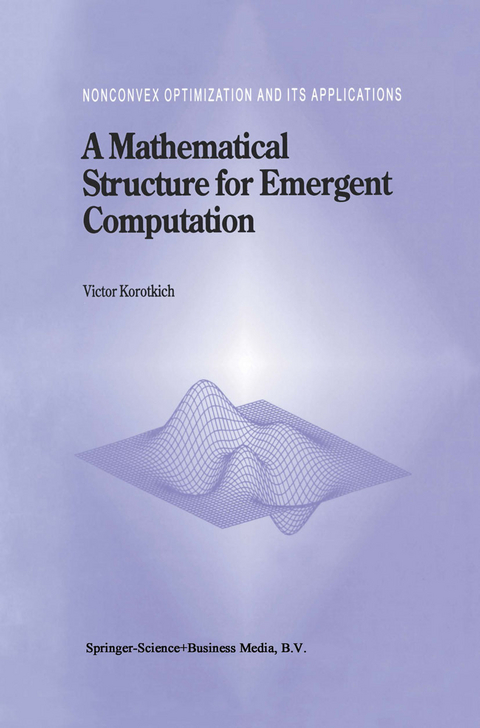
A Mathematical Structure for Emergent Computation
Seiten
1999
Springer (Verlag)
978-0-7923-6010-0 (ISBN)
Springer (Verlag)
978-0-7923-6010-0 (ISBN)
An understanding of emergent computation requires a profound revision of the most fundamental ideas.
Audience: The book is written at a level suitable for advanced undergraduate students and graduate students as well as research workers and practitioners in computer science information technology, mathematics and physics.
An understanding of emergent computation requires a profound revision of the most fundamental ideas. A noticeable attempt of such a rethinking is a world view in which natural systems are seen not as separate entities but as integrated parts of a unified whole. The book for the first time presents such a mathematical structure, which remarkably is based on integers as the single concept. As integers are considered to be the most fundamental entities irreducible to something simpler, this makes the mathematical structure a final theory, and thus we do not have to look for its explanation in terms of deeper concepts. The book is not only applicable to models of computation and optimization but also has scientific consequences, as it contributes to a rethinking of the most fundamental ideas about nature.
Audience: The book is written at a level suitable for advanced undergraduate students and graduate students as well as research workers and practitioners in computer science information technology, mathematics and physics. The book is suitable as a reference or as supplementary reading material for an advanced graduate course. Only a basic knowledge of calculus is required.
Audience: The book is written at a level suitable for advanced undergraduate students and graduate students as well as research workers and practitioners in computer science information technology, mathematics and physics.
An understanding of emergent computation requires a profound revision of the most fundamental ideas. A noticeable attempt of such a rethinking is a world view in which natural systems are seen not as separate entities but as integrated parts of a unified whole. The book for the first time presents such a mathematical structure, which remarkably is based on integers as the single concept. As integers are considered to be the most fundamental entities irreducible to something simpler, this makes the mathematical structure a final theory, and thus we do not have to look for its explanation in terms of deeper concepts. The book is not only applicable to models of computation and optimization but also has scientific consequences, as it contributes to a rethinking of the most fundamental ideas about nature.
Audience: The book is written at a level suitable for advanced undergraduate students and graduate students as well as research workers and practitioners in computer science information technology, mathematics and physics. The book is suitable as a reference or as supplementary reading material for an advanced graduate course. Only a basic knowledge of calculus is required.
Preface. Acknowledgments. 1. Integer Code Series (ICS). 2. Systems of Integer Relations and Structural Complexity. 3. A New Type of Hierarchical Formations and the Structure. 4. The Structure and Emergent Computation. 5. Searching for Universal Principles of Emergent Computation.
| Reihe/Serie | Nonconvex Optimization and Its Applications ; 36 |
|---|---|
| Zusatzinfo | XVI, 164 p. |
| Verlagsort | Dordrecht |
| Sprache | englisch |
| Maße | 156 x 234 mm |
| Themenwelt | Mathematik / Informatik ► Mathematik ► Algebra |
| ISBN-10 | 0-7923-6010-9 / 0792360109 |
| ISBN-13 | 978-0-7923-6010-0 / 9780792360100 |
| Zustand | Neuware |
| Haben Sie eine Frage zum Produkt? |
Mehr entdecken
aus dem Bereich
aus dem Bereich
Buch | Softcover (2022)
Springer Spektrum (Verlag)
39,99 €


